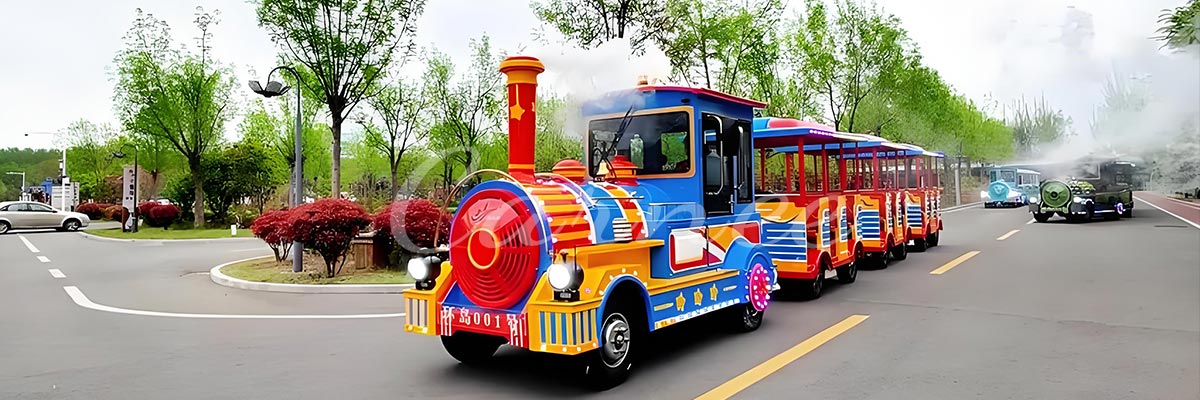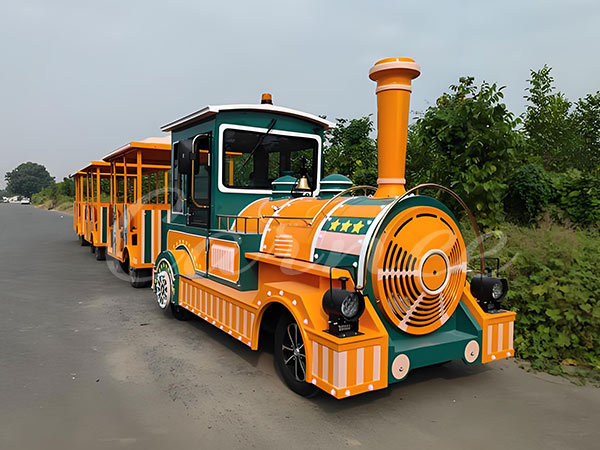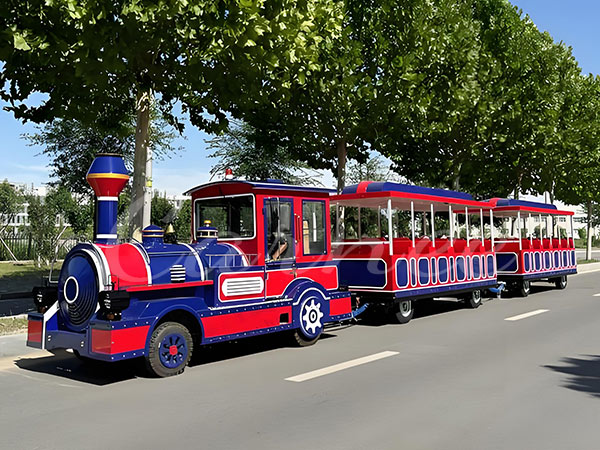
A trackless train is a type of vehicle that operates without the need for traditional rail systems, using electricity or magnetic power to propel it. Compared to conventional rail trains, trackless trains offer greater flexibility and lower construction and maintenance costs. The basic design of a trackless train consists of three main systems: the power system, suspension system, and control system.
The power system is responsible for providing the propulsion force. Trackless trains are typically powered by electricity or magnetism. With the increasing focus on environmental protection, some trackless trains have started using renewable energy sources, such as solar and hydrogen power, to further reduce energy consumption and environmental impact.
Trackless trains use magnetic levitation or air cushion technology to suspend the train above the ground, reducing friction and increasing operational efficiency. This system allows the trackless train to move smoothly over various terrains and environments, enhancing the overall riding experience.
The control system regulates the coordination between the power system and suspension system, ensuring the smooth operation of the train and the safety of passengers. This system is crucial for maintaining the stability and safety of the trackless train, allowing it to operate efficiently at various speeds and in different environments.
The manufacturing process of trackless trains involves several important stages, from material selection to production techniques, assembly, and testing. Each stage requires precise technology and high standards of quality control to ensure that every trackless train performs reliably over time.
Trackless trains need to withstand long periods of high-speed operation, so material selection is crucial. High-strength alloys, aluminum alloys, and composite materials are commonly used, as they are resistant to corrosion, wear, and provide the necessary strength for reliable performance in harsh environments.
The manufacturing process of trackless trains uses advanced mechanical processing technologies and precise welding techniques. Each component of the trackless train is subjected to rigorous quality checks to ensure precision and quality. These processes ensure that the trackless train operates stably and reduces the likelihood of malfunction.
The assembly process must be carried out according to strict design requirements, ensuring that all systems and components work in harmony. Once assembled, each trackless train undergoes comprehensive testing, including checks on the power system, suspension system, and control system, to ensure the train's safety during operation.


Trackless trains are widely used in theme parks and scenic areas, but their flexibility and efficiency also make them an ideal choice for shopping malls, airports, corporate parks, and other public spaces. Below are the main advantages of trackless trains:
One of the main advantages of trackless trains is their flexibility. Since they do not rely on fixed tracks, they can navigate various environments and spaces. Whether in urban parks, tourist attractions, schools, or shopping malls, trackless trains can easily maneuver and turn, making them highly versatile and adaptable to different terrains and spatial needs.
Unlike traditional rail transportation, trackless trains are not constrained by laid tracks, allowing them to handle a variety of complex terrains and environments. Whether on smooth roads, rugged mountain paths, or narrow areas, trackless trains can pass through effortlessly. This makes them ideal for outdoor adventures, sightseeing, and other scenarios that involve challenging or non-traditional roads.
Modern trackless trains are typically powered by electricity, significantly reducing exhaust emissions and reliance on fossil fuels compared to traditional fuel-powered trains. The electric-powered trains are not only environmentally friendly but also align with the green travel and low-carbon development trends. Additionally, they produce lower noise during operation, providing passengers with a quieter and more comfortable experience.
Trackless trains are not just transportation; they provide a comfortable travel experience. With modern designs and interior configurations, trackless trains offer spacious cabins and comfortable seating, allowing passengers to relax and enjoy the ride. Compared to traditional public transportation, trackless trains offer more personalised service and flexible route planning, catering to various customer needs and different travel scenarios.
The design and functions of trackless trains can be customised according to specific requirements. For example, different cabin styles, car body colours, and decorative themes can be chosen to fit particular events or locations. The customizable nature of trackless trains makes them an ideal choice for theme parks, corporate parks, shopping malls, and other venues. Whether providing transportation solutions for large events or offering convenient mobility for everyday visitors, trackless trains can deliver tailored services to meet site-specific needs.
Trackless trains, as an innovative form of transportation, not only offer flexibility and efficiency but also provide passengers with a comfortable and safe riding experience. As technology continues to evolve, trackless trains will play an increasingly important role in future transportation systems. Whether in theme parks, shopping malls, or large-scale events, they will continue to be an essential part of enhancing visitor experiences and supporting business development.
If you're considering adding a trackless train to your facility, we offer high-quality trackless trains for sale to meet your needs. Whether for theme parks, tourist attractions, or shopping malls, our rideable trains are designed to provide a fun, efficient, and eco-friendly transportation option.

Please contact us for free quotation by form below. We promise the quickest response within 24 hours: